by Tim Grierson and Glenn Heath Jr.
Tim is a film and music critic whose writing has appeared in Screen International, Paste, Playboy, L.A. Weekly, The Village Voice, Vulture and Deadspin. He is the author of four books, including FilmCraft: Screenwriting, a profile of the world’s greatest screenwriters, and a contributing editor at Backstage. He has also served on the jury for the Los Angeles Film Festival and is currently vice president of the Los Angeles Film Critics Association.
Glenn is the Director of Programming with the San Diego Latino Film Festival and film critic for the San Diego CityBeat. His writing has appeared in print at Little White Lies and The L Magazine and online at Slant, The House Next Door, Keyframe,Not Coming to a Theater Near You and Press Play. He is also the president of the San Diego Film Critics Society and teaches film studies at National University and screenwriting at Platt College.
Part One:
Aliens In a Strange World
Glenn,
Artists hate being pigeonholed, especially at the beginning of their careers. When I was starting out as a music critic interviewing new bands, I would often ask what songwriters inspired them, trying to pick up on possible influences. I can’t even remember who it was now, but one front man politely but firmly declined to answer my question. “I don’t want to be put into a box,” he told me. “Journalists are always trying to figure you out or draw some parallel between what you did and what someone else did before you.” That’s a rough paraphrase, but the essence of his point has stayed with me: Critics are so intent on connecting invisible dots, whether within an artist’s work or between his and his predecessors’, that we don’t always take the time to let that work stand on its own. It’s a constant tension between the artist (the butterfly) and the critic (always wanting to pin the butterfly down and add it to his collection).
I’ve been thinking about pigeonholing a lot lately in relation to Jonathan Glazer’s films. He’s only made three movies in 13 years, but he’s starting to assemble an oeuvre that’s distinctive for its consistent quality and unpredictability. 2000’s Sexy Beast, 2004’s Birth and his latest, Under the Skin, are all quite good—that they come from the same person makes them fascinating.
Let’s consider what makes them different. None are close to being in the same genre. Sexy Beast is a pseudo-gangster film-cum-black comedy, Birth is a dark romantic drama-cum-psychological character study, and Under the Skin is a sci-fi drama with horror elements. They take place in very different milieus around the globe: the warmth of Spain, the chill (both literal and figurative) of upper-crust New York during winter, and the gray-sky dreariness of Scotland. The films’ scores also have little in common. Sexy Beast can occasionally feel like a curated jukebox, repurposing everything from Henry Mancini’s dreamy “Lujon” to the Stranglers’ 1977 snotty punk-rock hit “Peaches.” Birth is graced by Alexandre Desplat’s relatively traditional score, which incorporates piano and strings for moods that are sometimes wistful, sometimes somber. And Under the Skin exudes its surreal, otherworldly tone in large part thanks to Mica Levi’s electronic-orchestral music, which pays homage to the film’s sci-fi trappings while still feeling prickly and handmade. Even Glazer’s initial involvement with his projects varies. He was given Louis Mellis and David Scinto’s talky, tart screenplay for Sexy Beast, while Birth started from his own idea. Under the Skin was based on Michel Faber’s novel that Glazer, apparently, radically revised.
As for their similarities, those are harder to name. Birth and Under the Skin were both booed when they screened in Venice. Because of the superficially cool tenor of those two films, Glazer’s been pegged as an heir to Stanley Kubrick. Like that front man I interviewed long ago, Glazer doesn’t take too kindly to such comparisons—not because he has any problem with Kubrick, but because he dislikes the associations they might conjure up in the viewer’s mind.
“That [Kubrick comparison] makes my toes curl up in my shoes,” he said recently. “I think [Under the Skin], good or bad, should stand on its own or fall on its own. … When I see a film I don’t want any comparison. I like films that just creep up on you, that you have no introduction to. I like that, I like to see a film in that way and I think when you put something in front of that, you’re being set up for a fall. It’s like a shadow that’s not of your own making.”
This is part of why my appreciation of Glazer has increased with each film: You can’t pin down what he’s doing or why. (And because he’s taken such a long time between films, there’s a built-up anticipation for where he might go next.) If it was tempting to think of Glazer as simply a stylish former commercial-and-video director after the fashionable cool of Sexy Beast, then the deep sorrow hovering over the muted, interior Birth redrew our expectations. And now with Under the Skin, anchored by a terrifically spare performance from Scarlett Johansson, Glazer has ventured into terrain that’s philosophical, metaphysical, and barebones, telling the story of a visiting alien luring single men into her lair so that she can harvest their bodies.
But now that I’ve complimented Glazer for his agreeably diverse collection of films—and at the risk of not heeding the advice of that front man from long ago—I’d like to suggest a possible thematic connection between Glazer’s three movies that might be there or might just be in my head.
After watching Under the Skin, his best film yet, I was struck by the fact that while Johansson’s unnamed character is the first alien to appear in his films, in their own ways Sexy Beast and Birth are also about people who are aliens or, rather, alienated from their worlds.
Interestingly, this alienation isn’t always a bad thing. Ray Winstone’s Gal, the retired safecracking antihero of Sexy Beast, is happily living in a beautiful Spanish villa focusing on his suntan while putting his former criminal life in cold, shitty Britain in the rearview mirror. But in Birth, Nicole Kidman’s Anna is in a much more dire situation. Still grieving for a husband who’s been dead for 10 years, she’s willing to believe that a mysterious boy (Cameron Bright) could be a reincarnation of him. Unlike Gal, Anna is living in the same physical environment but marooned in a new emotional environment she wants to escape—so much so that she sees this boy, as unlikely as it sounds, as a chance to return to her old life.
By comparison, Under the Skin tackles this theme in a much more complex way. Alienation, isolation, spiritual loneliness: They’re treated not as temporary conditions brought on by circumstance but, rather, a constant reality that weighs on us differently depending on the situation.
In Under the Skin, Johansson’s alien drives around Glasgow in a bulky van, stopping to try and lure male pedestrians in on the pretense of needing directions or offering them a lift. Whatever her feelings about her murderous assignment, Johansson’s character keeps them buried beneath her wig and fur coat. But she’s not alone in being mysterious and slightly aloof: The men are also like strange creatures cut off from the world around them. They reveal little of themselves in their brief, sometimes fatal encounters with her. (Underscoring their anonymity, none of Under the Skin’s characters are named in the end credits.)
I don’t want to ruin any plot twists for those who haven’t seen it, but one of the film’s strengths is how it gradually twists our perception of what we’re seeing, re-framing our sympathies and demonstrating how the notion of alienation can change over 100 minutes of screen time. In the story’s first half, Johansson goes about her business of attracting and killing men with unsettling efficiency, displaying no emotion. She can be just as charming and sweet as she was in Her as she’s enticing her prey, utilizing what The New Yorker’s Anthony Lane infamously referred to as “the honey of her voice” as a lethal lure. But when the men are led to their doom, the smile drops and the voice goes silent, replaced by robotic precision.
It’s not just her beauty that transfixes these men—it’s her ability to find isolated souls and tap into their loneliness. This is most poignantly demonstrated when she picks up an outcast with Neurofibromatosis portrayed by Adam Pearson, an actor who actually has the condition. Her tenderness is played out so genuinely—and his response is so heartrending—that it changes how she feels about her grisly assignment. And eventually, her change in attitude transforms how she behaves on Earth, bringing about unintended consequences that, as a result, force us to see her less as a hunter and more as the isolated soul. Likewise, humanity stops seeming like a foolish, gullible species and more like a cruel, predatory one. Suddenly, her separation from the world is not indicative of her superior powers—it’s an alarming, dangerous liability.
My reading doesn’t seem entirely out of the blue: In an interview withThe Guardian last month, Glazer owned up to feeling a certain amount of alienation himself. “I suppose I must have that alien thing in me to start with,” he admitted. “Yeah. Probably. I do feel outside. Not entirely, but I do. I’ve had that about me since quite a young age I think.” (What adds to the appealing mystery of Glazer’s movies is that he’s not great at talking about them. “This is why I don’t like interviews,” he told The Guardian. “I sound batty.”)
Under the Skin articulates that feeling of being on the outside more acutely than his previous films—although, interestingly enough, it does connect to some of the music videos he directed before transitioning to features. The Dissolve’s Noel Murray has already noticed the linkbetween Under the Skin and Glazer’s 1998 video for UNKLE’s “Rabbit in Your Headlights,” which depicts a transient, soulful Denis Lavant mumbling to himself as he’s hit by one passing car after another, each time standing back up and moving forward. Throughout Glazer’s music videos, the natural world is presented unvarnished, but with some strange twist that makes it feel surreal. In Radiohead’s “Street Spirit (Fade Out),” the band members fall and move in melancholic slow-motion, lead singer Thom Yorke’s ability to levitate at the end representing a minor triumph over the group’s general dejection—and a precursor to Lavant’s similar sign of defiance at the end of “Rabbit in Your Headlights.” The band’s later “Karma Police” goes further down the rabbit hole, Glazer sticking a bored, almost catatonic Yorke in the back of a driverless car running down a terrified pedestrian. And in Glazer’s most acclaimed video, for Jamiroquai’s “Virtual Insanity,” front man Jay Kay is in a windowless room in which the floor keeps moving, the environment itself at war with the main character.
Glenn, I’d love to know what you think of my interpretations of Glazer’s output. Am I forcing connections that aren’t there? Are there other thematic links I’ve overlooked? And, ultimately, is it a mistake for a critic to go searching for them? I’d also like to hear your thoughts on another, somewhat related point.
As you may know, for Under the Skin, Glazer and cinematographer Daniel Landin used hidden cameras both inside the van and out on the streets. The filmmakers wanted Johansson’s interactions to feel as authentic as possible; in the process, they risked not getting the necessary releases from the extras, which would have left them with footage they couldn’t use. I’m glad not to have know about this ploy going into the screening: Johansson’s encounters are so natural that the “Look, ma, no net!” gimmick in some ways does a disservice to the skill she brings to these scenes. Under the Skin weaves its tale so beguilingly that perhaps it doesn’t matter how it was constructed, but I wonder if you felt any such misgivings about the technique.
– Tim
Part Two:
Road Hazards
Tim,
What an excellent conversation starter. Let’s see how far into the abyss we can roam.
Combing through my initial thoughts on Under the Skin, I couldn’t stop thinking about the prickly nature of perspective, specifically the viewer’s. I was enthralled by how much it impacted me from both a thematic and aesthetic standpoint, especially having just re-watched both of Glazer’s previous features a few nights before. The connections between all three were so apparent despite their obvious differences, though perhaps through a very subjective thought-process that might say more about me as a viewer than the filmmaker specifically.
Still, this directly relates to the aspect of pigeonholing you discussed in the initial post. While artists themselves (in this case Glazer) may fight tooth and nail against the crystallization of recurring themes, motifs, and stylistic touches in their work, active audience members will make connections, real or imagined, over time. Isn’t that what makes our chosen profession so interesting? It’s certainly what fascinates me about the medium in general–engaging with the work in ways even the filmmaker’s themselves didn’t see coming.
Isolation is paramount to all three of Glazer’s features. Whether the alienation is by choice (Sexy Beast), feared (Birth), or strangely organic (Under the Skin), this feeling molds the genre being presented. Glazer has proven himself adept at creating tonal hybrids: sun burnt gangster gloom, Sirkian surrealism, and postmodern sci-fi. How environment itself plays a role in forming and deforming the feeling of separation interests me even more. Glazer personifies this menace with near-omniscient antagonists who upend the protagonist’s “normal life” to satisfy their own selfish urges.
What’s fascinating is the daisy chain of hostile physical spaces, humans in conflict, and the consequences of those two clashing. In Sexy Beast, nature initiates the violence when a large boulder tumbles down a hill and nearly crushes Gal, Ray Winstone’s exiled gangster, as he sunbathes at his Spanish villa. The falling rock is a blunt reminder that setting is always capable of sudden (and scary) change, and it foreshadows the arrival of Ben Kingsley’s human hurricane Don Logan.
Hyper real dream sequences are a defining feature of Sexy Beast, yet there are more subtle stylistic choices Glazer uses to further set up the masochistic relationship between character and place. Point-of-view shots are often jarringly uncomfortable. Take one such instance where the camera glares directly into the gleaming sun, or when it’s fastened to a twirling door creating a nauseating effect. We sense that Gal can’t find any solace, even while living in the lap of luxury. When Don arrives hoping to recruit his old friend for a heist back in London, he reveals his true intentions after Gal repeatedly refuses: “I won’t let you be happy. Why should I?” Discomfort is the true enemy in Sexy Beast, produced by assorted predators, foreign and domestic.
The same could be said of Glazer’s music videos: the terrified civilian stalked by a driverless car in Radiohead’s “Karma Police” or Denis Lavant’s vagrant repeatedly being sideswiped in UNCLE’s “Rabbit in Your Headlights.”
But his sophomore effort, Birth (still to my mind his masterpiece), best highlights the psychological cost of someone (or something) trying to survive in a poisonous and volatile environment. While not as visually splashy as either Sexy Beast or Under the Skin, the film is nonetheless a gorgeous requiem. It begins with a long tracking shot following a jogger through snowy Central Park, finally cutting to a wide-angle reverse shot as he collapses and dies within a shadowy tunnel. This aesthetic choice epitomizes the graceful peril of Birth. Glazer’s visual style is much more traditional here; the camera looms around corners, lingers in shadows, glances through frost-covered windows. Is the camera taking the perspective of the fragile heroine, Anna (Nicole Kidman), or her tormentor, young Sean (Cameron Bright) who claims to be her reincarnated husband? Perhaps both as they connect on a metaphysical level, trapped in the American version of a Merchant Ivory production by way of Kubrick.
In the end, I don’t think it matters that Glazer refuses to answer this question. Along with their penchant for denial, a trait each of his lead characters express at one point or another, they are equally touched by curiosity. This would explain the allure of Sean’s appearance; he represents a delusional escape from the never-ending loss she feels. “That’s all I want—peace,” she confesses late in the film, an antithesis to Don’s aforementioned destructive statement to Gal.
Under the Skin is less concerned with the human experience than with trying to see humanity from a fresh perspective. The key difference is that its lead character, Laura, an extraterrestrial played by Scarlett Johansson, begins with a blank slate. There’s no judgment in her eyes or her actions, only the immediacy of her instincts. During the film’s mesmerizing first hour, she cruises Scotland as if she were an intergalactic fact-finder, scooping up isolated men and luring them into a soupy purgatory where their flesh is transformed into something else altogether (data perhaps?).
I love what you wrote about the shift that takes place in Laura when she meets the disfigured man. That this pushes her away from cold objectivity into a more subjective, isolated state is one of the film’s most radical traits. I’d go one step further and say it opens Laura up to torment by the very environment (natural and human) she has, up to this point, controlled.
Juxtapose the beach sequence, where Laura watches a husband and wife drown while trying to save their dog, with her fateful walk through a knotty forest in the closing moments. Glazer films the former almost entirely in long shot, from a distance suited to the caustic and unfeeling observer. Later on, Glazer establishes a much more intimate perspective when Laura’s hunted like an animal. The fear on her face is genuine, another example of the range Johansson brings to this very challenging role, and we feel her shock because of the tighter shots.
Under the Skin’s last image implies another form of reincarnation, albeit a more literal kind expressed through the smoke, littered with snowflakes, rising into the sky. I’d argue that all three of Glazer’s endings reassess what it means to transition. Will Gal ever find peace, even after conning his gangster buddies into thinking he’s made right? He probably has a better chance than Anna, who spends the last moments of Birth weeping on a blustery beach knowing that her future is even more uncertain now than ever before. Considering the evidence, I think this makes Under the Skin Glazer’s most strangely optimistic and poetic work. For all we know, the ash we see billowing up into the air is Laura returning home to file her final report on the absurd and brutal contradictions of life on Earth.
We could continue this thread by delving into the way Glazer’s compositions and music choices either reinforce my claims about environment or subvert them; I’m blown away by how many interpretations one can glean from these films. Like you said, Tim, they are kinetic in such a variety of ways that it’s hard to imagine them coming from the same mind. But there’s so much connective tissue here that I would almost suggest that his work thus far could be formally linked together. Call it Glazer’s “Afflicted” trilogy.
To answer one of your other questions, I didn’t know that segments ofUnder the Skin were filmed with hidden cameras. Like you, I’m thankful for being ignorant to this fact, because it doesn’t when considering the overall vision; it invariably clouds my appreciation, if anything.
In closing, I’d like to volley a few more questions your way in the hope of looking even deeper into Glazer’s thematic intentions. Quality of life, and what that means, is an element of all three films that becomes a very thorny issue. I can’t help but go back to the beach sequence inUnder the Skin where the woman swims to her death trying to save her pet from the treacherous waves, and in turn the husband follows suit by attempting to rescue her. What does this horrific sequence say about the desperation we feel when trying to control the uncontrollable (i.e. nature, death)?
Furthermore, what do you make of Glazer’s exploration of marriage (not just talking about the traditional sense), between emotion and duty? I keep going back to Gal, whose tenuous situation in Sexy Beast stems from his desire to have a relationship outside the gangster universe. Birth seems like even more of a minefield in this respect, as does Under the Skin, which further complicates the union of perspective and response during the second half, when Laura abandons her mission and begins exploring both the physical and emotional terrain of human society. I’m looking forward to your thoughts on these ideas and more.
– Glenn
Part Three:
Order and Control
Glenn,
There is plenty to chew over in your post, but I’m going to start with Glazer’s exploration of marriage, as well as the tension between emotion and duty within his characters. Those questions lead me to this roundabout observation: In some ways, Glazer’s three movies are in the reverse order of what we’d typically expect from a filmmaker as he ages.
While it’s true that Sexy Beast is the most “showy”—flashy characters and an eclectic soundtrack—it’s also the film that, curiously, most reflects an older, more mature perspective on life. True, Don Logan is the character with the sharpest lines and the most bravado; Kingsley chews the scenery mercilessly and received the film’s only Oscar nomination. But it’s telling that Gal and his friends cannot stand Don: They want their tranquil, less complicated life in Spain away from Britain’s world of seedy gangsters. This is not your typical heist film about a retired criminal who has to do one last job—it’s about a retired criminal who does everything he can not to do one last job.
When Sexy Beast came out in 2000, I liked it but lumped it into that subgenre of Tarantino wannabes that were an art-house staple in the ‘90s after Pulp Fiction. Watching it now, I recognize how shortsighted that was: In the Tarantino version of Sexy Beast, Don would be the cool badass the audience wants to emulate. Likewise, Gal and his wife DeeDee (Amanda Redman), a has-been porn star, would seem like aging jokes. But Glazer doesn’t adopt that attitude: Sexy Beastexamines how hard it is for anyone from the gangster life (or the gangster movie) to get away scot-free. The big third-act heist, though shot and edited with sufficient skill, just isn’t that important. Glazer almost tacks it on as an afterthought, with the real drama coming from Gal’s subsequent attempts to escape London (and get back to DeeDee) without Ian McShane’s crime boss killing him.For all its superficial showiness and violent passages, Sexy Beast is about seeing through the trap of the temporary rush and appreciating something more permanent and rewarding.
By comparison, Under the Skin seems like the ultimate “first film.” Its sci-fi/horror premise could make it a midnight-movie, while the use of hidden cameras isn’t typical for an established filmmaker with a proven track record. And it has the scrappy, low-budget energy one associates with a new talent spoiling to be heard. This is not to say Under the Skinis the work of an immature or nascent director, but even the movie’s jaundiced view of humanity seems more akin to the perspective of a young turk.
The comparably autumnal Sexy Beast is far more generous and forgiving of human nature, at peace with our permanent foibles. It’s also an intriguing reverse-order response to the struggles with human connection explored in Glazer’s later films. Connecting to another person is impossible—and potentially deadly—in Under the Skin; the other side of that coin is examined in Birth. There, love isn’t wholly absent—it’s like a lingering disease, one that Anna can’t shake. BothSkin and Birth can be read as a young person’s all-or-nothing view of relationships: The available choices appear to be either permanent loneliness or endless moony pining. Now look at Sexy Beast, which has all the measured romantic realities regular people recognize from their own lives. Gal has found contentment in a woman others would disdain because of her tawdry past, while Don is still hung up on Jackie (Julianne White), the wife of Gal’s friend, after they fooled around a few years ago. The characters in Sexy Beast, except for Don, have learned to find a sliver of satisfaction where they can; they’ve arrived at the happy ending that’s not in store for anyone in Birth or Under the Skin.
As for the other big takeaway from your post, you mentioned Under the Skin’s characters on the beach “trying to control the uncontrollable,” drowning while attempting to save others. Indeed, the beach sequence is incredibly upsetting, in no small part because of how dispassionately Glazer films it. The drowning victims, seen from a distance, might as well be ants whose lives barely register to us superior beings. It also reminded me of Birth’s final scenes, as Anna wanders the beach on her wedding day, marooned from any sense of happiness. In Glazer’s movies, people go to the water not for renewal but to literally or figuratively die.
Glazer’s characters are consistently grasping at some sense of control that eludes them. Birth’s tragedy is that Anna can’t let go of her dead husband Sean, nor can she summon the self-discipline to realize that this boy can’t possibly be her reincarnated husband. A preposterous romantic fantasy is more believable and comforting to her than the truth. But Birth is beset with similarly floundering souls. Joseph (Danny Huston) can’t get Anna to truly love him—can’t get her to shed her obsession with her deceased husband—no matter how hard he tries. Clara (Anne Heche) could not wrest Sean from Anna in life and, despite his death, wants Anna to know that they were secret lovers. A fixation on the uncontrollable binds all of Birth’s characters—little wonder there is so much misery in that film.
As for Sexy Beast, you’re right about that runaway boulder being an apt prelude to Don’s violent interruption of Gal’s peaceful new life. Gal can’t prevent chaos from coming to his door, but if he’s lucky, he can at least sidestep it or confront it. (Since we’ve both spent many paragraphs praising Glazer’s virtues, allow me a moment to say I’m not keen onSexy Beast’s ending, which depicts an imaginary/dream scene of the dead Don still alive and fuming while buried under Gal’s pool. Whether it’s meant to indicate that Don can’t be contained even in death or that the past will always haunt Gal, it’s a touch too cute for my taste.)
Of course, it’s understandable why a filmmaker (consciously or not) would explore the notion of control: It’s an important prerequisite for the job. Directors aren’t just twisting the messy peculiarities of reality into something dramatically compelling and coherent; they must contend with countless obstacles—actors’ fragile egos, unexpected location problems, budget constraints—while still delivering a film that meets their original vision.
With that in mind, let’s for a moment view Johansson’s alien in Under the Skin as a stand-in for the typical auteur. Confident and in command, she calls the shots, the streets of Glasgow her set and the city’s residents her unwitting cast. Only when she abandons her narrow focus and lets go of control does she orchestrate her own destruction, no doubt the fear of many an obsessive, dictatorial director.
At the same time, though, Under the Skin also works as an essay on performance: Johansson’s character seduces innocent bystanders the same way stars seduce an audience. But the movie also alludes to the darker implications of that uneasy relationship. Stars (like the alien) feed off the adoration of their admirers, reducing them to passive, helpless spectators. In the film’s first half, when Laura is methodically stalking her prey, she’s like a glamorous actress who has the public wrapped around her finger: They put her on a pedestal, and they’ll happily tolerate anything just to be close to her.
But after the alien develops a curiosity about human beings, she’s like a star who’s lost her allure, now suddenly at the mercy of those she once commanded. Celebrities initially feast on our admiration and desires, but inevitably there comes a moment when the situation reverses and a vicious backlash occurs, our admiration turning to scorn and derision. (We even sometimes refer to stars as being “otherworldly,” an indication of the attraction-repulsion dynamic at work.) That Under the Skin’s alien is played by one of our most photogenic and accomplished young stars in the midst of a hot streak makes Laura’s fate all that more poignant. Glenn, your description of Under the Skin’s ending, with its promise of renewal, is beautiful—I just wish I could believe it. To me, Laura is irretrievably destroyed, her ashes floating away into nothingness. Extending the alien-as-star metaphor, she drifts off into a cruel, unfeeling oblivion—objectified, misunderstood and discarded like so many Hollywood starlets are.
Handing the baton to you for our final lap, I’d love to hear your thoughts on how Glazer’s choice of music reinforces or subverts his characters’ tension with their environment. Also, if you’re game, I’d be curious to know what you think of another idea I’ve had bouncing around in my head about Glazer. It took four years between Sexy Beast and Birth, and then another nine years between Birth and Under the Skin. Because of years spent reworking the script, as well as cast members coming and going, Under the Skin now comes to us after much anticipation. How does that prolonged wait affect you as a critic? You called Birth his masterpiece, so I imagine you were quite excited for when you’d finally see Glazer’s follow-up. How do you reconcile pent-up expectations with the final product? Would your response to Under the Skin have changed if it had come out, say, a year or two after Birth? This is all theoretical, abstract what-if conjecture, I realize, but for me, Under the Skin was one of those rare movies that lived up to my hopes for what an emerging filmmaker could achieve in his much-delayed next offering. My initial response was spurred, in part, by the satisfaction that he had lived up to his promise after such a long wait. But is such an appraisal fair? When a director makes a movie every two years, it’s easier to assess trends and areas of growth. How do we accurately gauge the progress of a filmmaker who’s been away for so long?
– Tim
Part Four:
The Waiting Game
Tim,
The order of Glazer’s work is intriguing for the reasons you mentioned. To me, Birth feels like the last film in a director’s career for the way it develops certain themes (mortality, grief) that some filmmakers spend their entire lives trying to grasp. The main characters, most notably Nicole Kidman’s Anna, suffer bouts of extreme solitude and sadness that drive them to make poor decisions. In turn, Glazer’s static camera spends a lot of time watching them stew, leaning heavily on the actors to externalize their characters’ internal trauma.
Birth’s view of faith is even more warped. Over the course of the film, Sean breaks Anna’s fragile spirit as he corrupts the possibility of her husband’s resurrection. Based on the film’s last scene, whatever lies beyond death can only be an improvement over this earthly purgatory. The family unit, a last refuge for the grieving, is a broken entity in Birth. From the deceased husband’s infidelity to Sean’s desire to separate Anna from her finance and extended relatives, Glazer suggests that togetherness and trust is something we spend our lives chasing.
I don’t think Glazer is a misanthrope, but with Birth he explores some deeply troubling ideas about the selfish qualities of happiness. Before her husband passes away, it’s surmised that Anna once had it all: wealth, social standing, family, and love. In a way, she still does after his death, but has been mired in a trance ever since. Her grief is so potent that ten years after his passing she is willing to give up her future for a chance at reliving the past, through a relationship with a little boy no less. Is nostalgia the real gateway drug to madness? Glazer sees Anna as a conduit for those of us who will do (and believe) anything in order to avoid the painful reality of grief.
Which brings us to Birth’s hauntingly classical style, a combination of old Hollywood craftsmanship and the aching coldness of modernist European cinema. Light peeks through the cracks between perfectly framed New York City skyscrapers, a birthday celebration is lit entirely by candlelight, and posh penthouses function as cozy tombs. Graceful compositions capture the texture and shadow of a gray, sleep-deprived world. It’s a wise and patient film, but an unforgiving one too, the product of an artist who’s experienced his fair share of complicated disappointments and heartaches.
To answer your question about personal expectations, it’s impossible not to be affected by a long gap between a director’s projects. Terrence Malick immediately comes to mind. The Thin Red Linetransformed my view of cinema when I saw it at the tender age of 18, and I returned to it multiple times throughout college. Then came The New World six years later, which I picked as my second favorite film of the 00’s.
I felt even more anticipation during the next six years leading up to seeing The Tree of Life at Cannes. But trying to write about it immediately afterward was nearly impossible, and I confessed as much in my festival dispatch for The House Next Door. Why? It wasn’t that I was confused by my reaction, which was overwhelmingly positive. I just knew it would be difficult for me to separate my emotional response from my critical one. They were inexplicably intertwined. My history with Malick went back too far, and such a personal relationship is always difficult for a writer to consider under the pressure of festival fatigue and looming deadlines. I can only imagine the challenge faced by critics who had to wait nearly twenty years for Malick’s resurgence after Days of Heaven.
I was less infatuated with Glazer’s work leading up to Under the Skin. I had enjoyed Sexy Beast on first glance, but like you had focused on how it fit a specific genre, and not how it subverted conventions. My initial reaction to Birth in 2004 was mostly confusion; I wasn’t ready for it. Only after I revisited it a year or so later did my admiration grow. A third viewing confirmed it as my favorite of Glazer’s films, primarily because its mysteries increased as the years passed.
Age and circumstance have a lot to do with the way viewers anticipate and experience a film. Under the Skin is the first of Glazer’s films that I’ve felt on the same wavelength with during my first viewing. Put another way, it’s the film I gained the most meaning from initially, especially in relation to themes and motifs. But in the decade since Birthwas released, I’ve matured and become a working film critic. I had more life experience coming into Under the Skin than I did with Birth. That has to count for something when we view these films. If not for the gap between Birth and Under the Skin, I would have responded to Glazer’s latest film very differently, just as I would have to The Thin Red Line if it had been released a decade earlier than it was. Certain films come around at the perfect time and hit you immediately, while others take a lot longer to digest and grow with age.
In the end, when we gauge a filmmaker’s progress over time aren’t we gauging our own progress too? I might approach Under the Skindifferently in a few years, but it’s not the film that has changed, but my perspective of it. I’ve never understood how some critics can be so vehemently certain about their reaction (negative or positive), leaving little room for discourse. Isn’t it a film critic’s job to start the conversation instead of end it?
Jonathan Glazer’s fluid work has certainly provided us with plenty to fawn over this past month. I love that his films present environments in flux and characters in transition, show the façade of stability and the inevitability of confronting one’s own fears. They may suggest the importance of institutions like marriage and codes regarding work, but value their subversion in favor of physical, emotional, and psychological exploration. Looking at these patterns, he seems like a natural fit for tackling an acid Western.
Whatever’s next, that Glazer’s made such a profound mark on film culture with only a small body of work should make all of us excited for what’s to come. Let’s just hope it doesn’t take him another ten years to resurface.
– Glenn
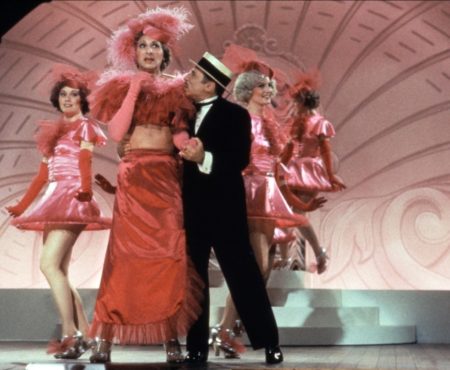


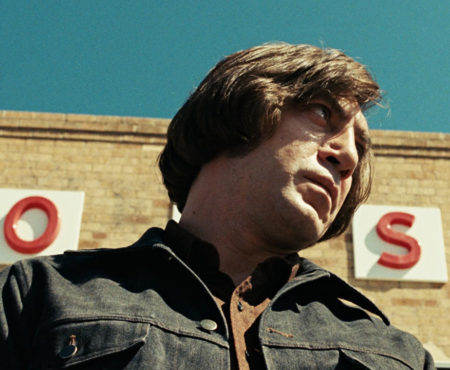

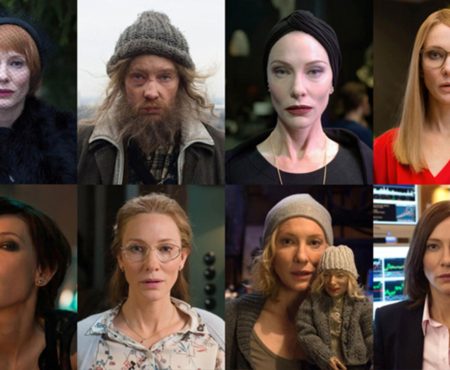








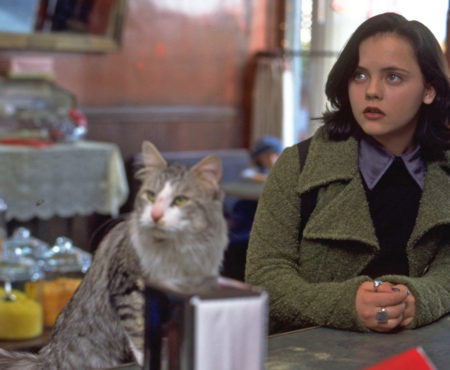
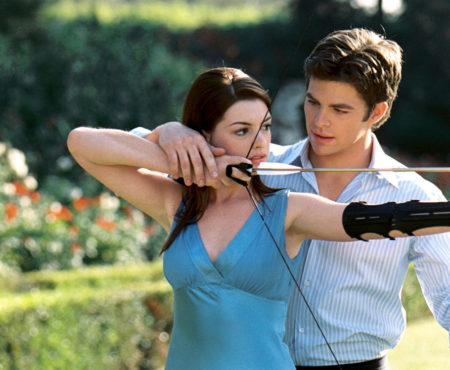



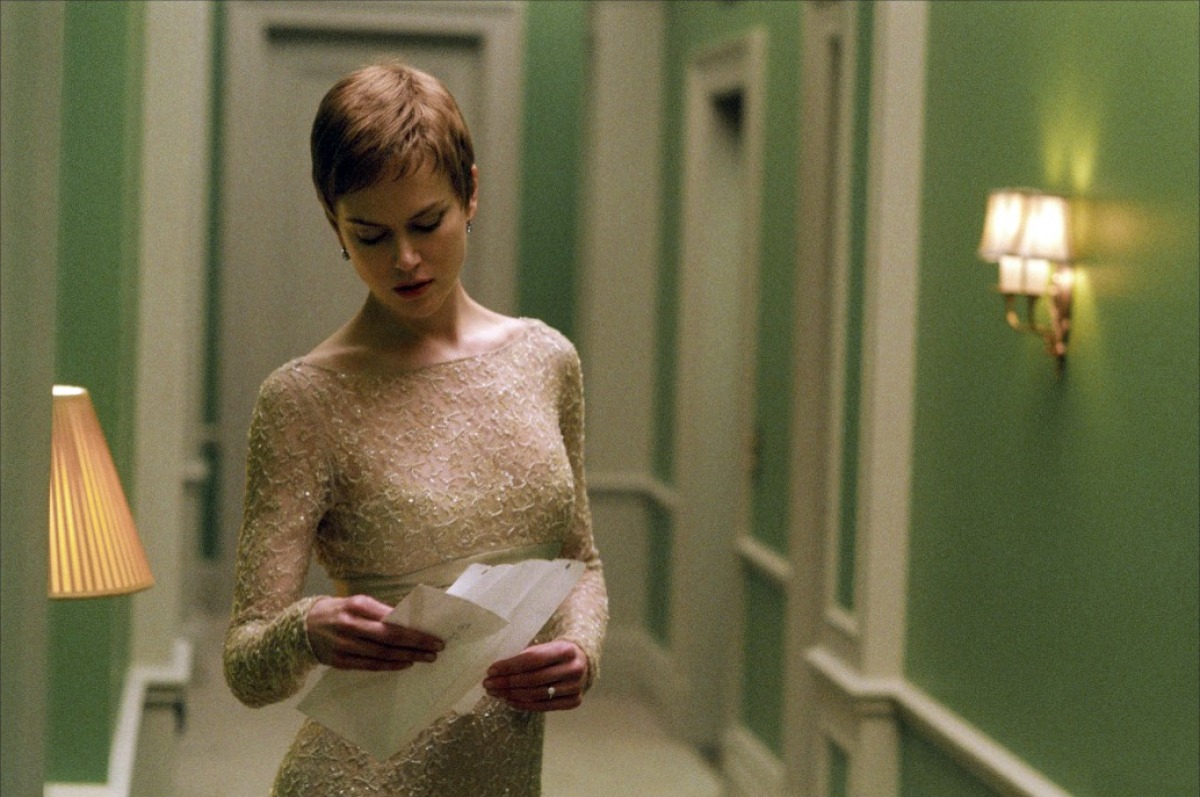
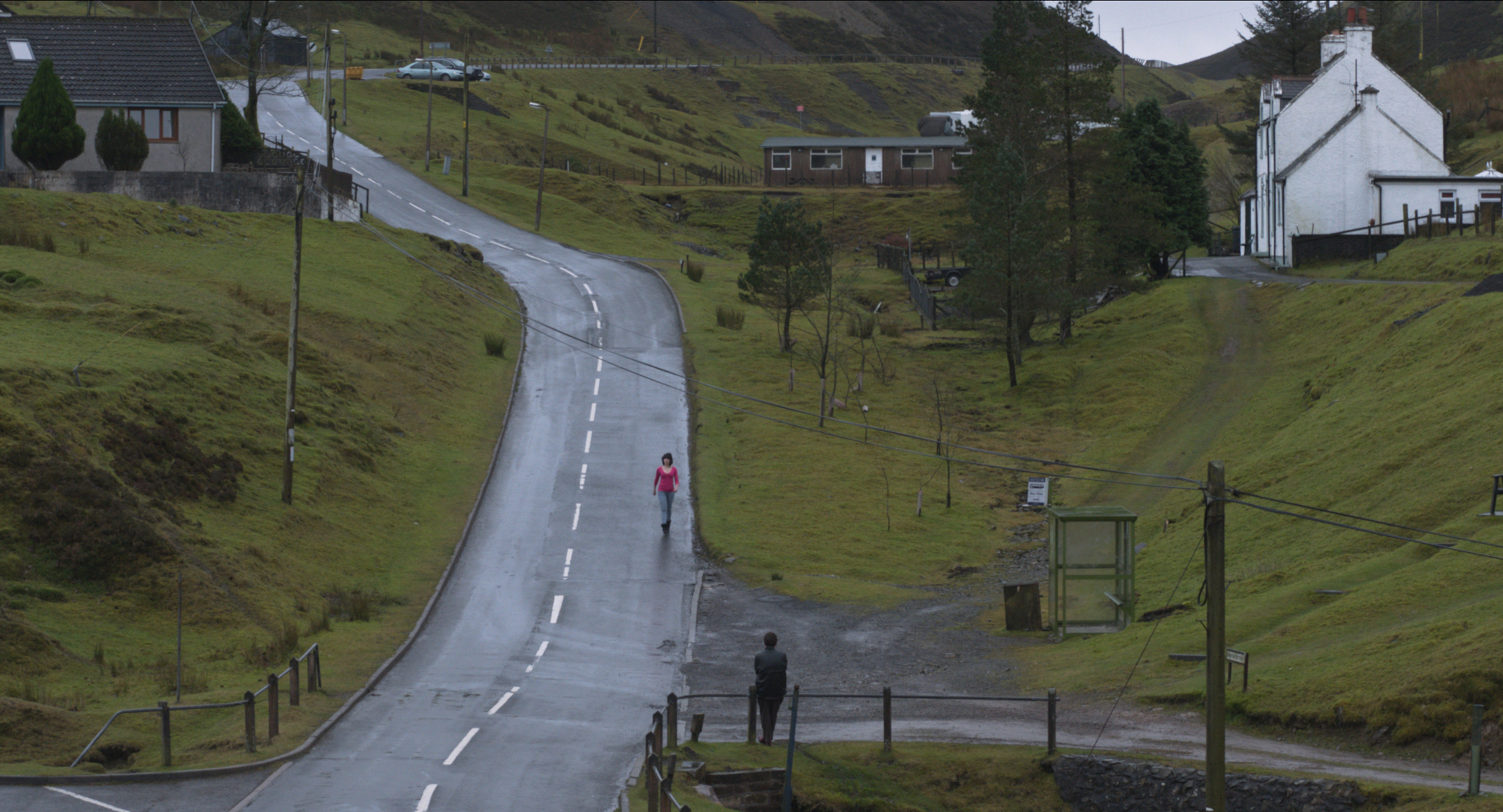
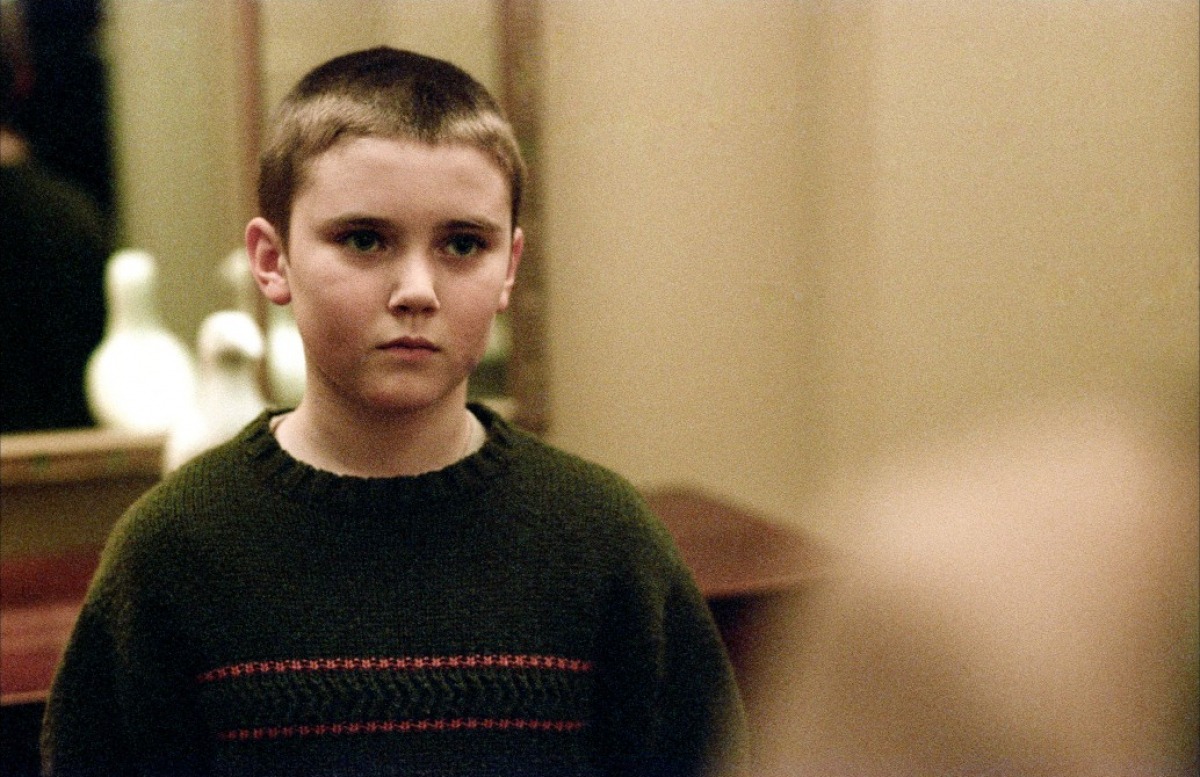
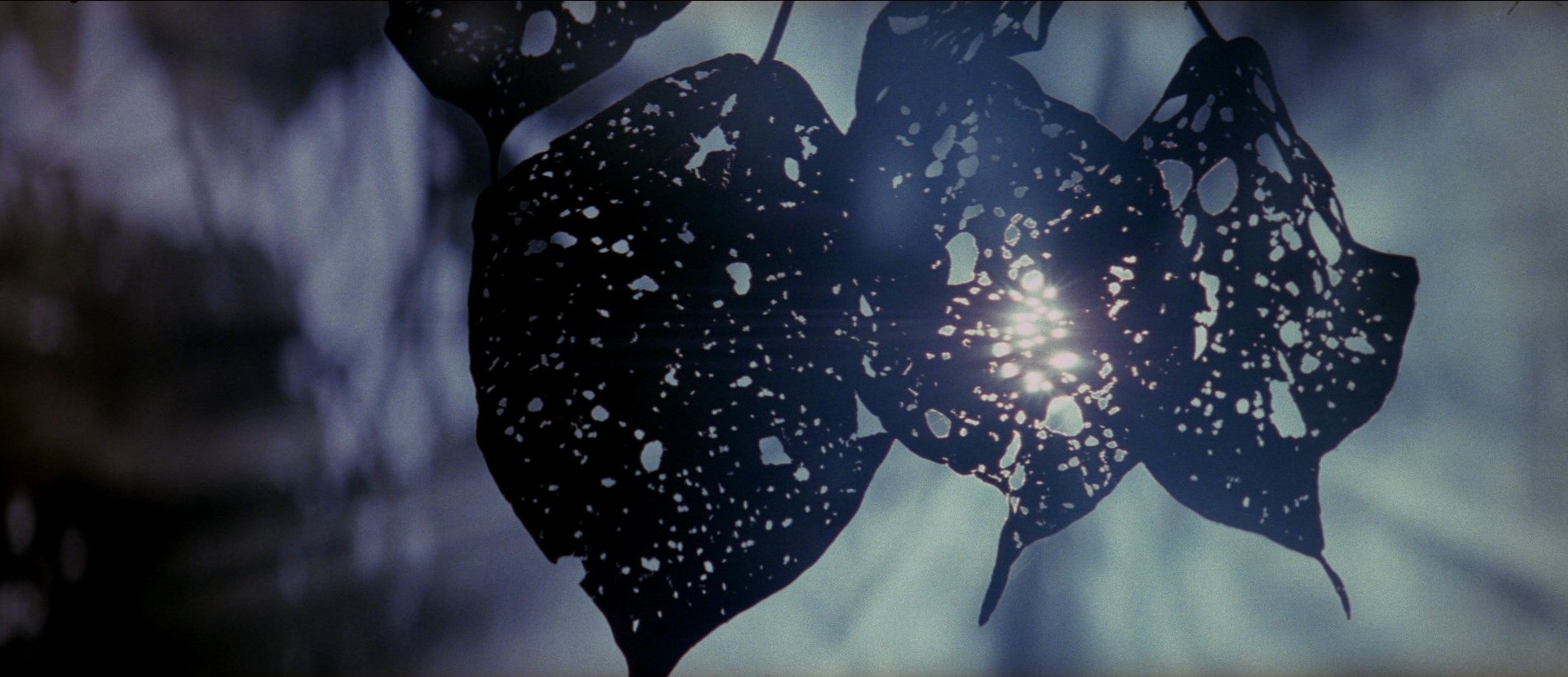

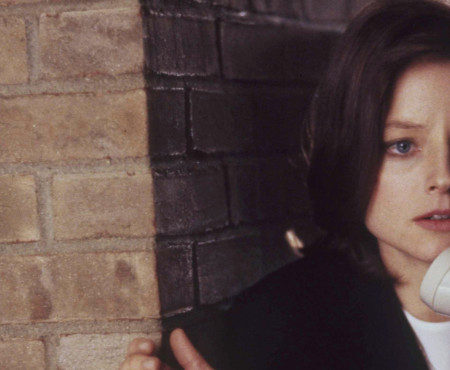
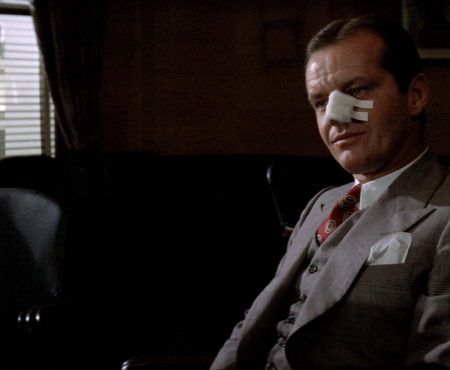
3 thoughts on “Inside Jonathan Glazer”
Absolutely fantastic discussion and hits on so many reasons why Glazer is such a fabulous filmmaker and one I hope makes films at a quicker rate. One thing I like about his films is the initial logline seems generic but he makes them much more unique and down a path you can’t imagine. Analysis like this will have me coming back to this website more often
Pingback: Interview w/ Glenn Heath Jr. - CinemaSpartan.com
great discussion on one of the most interesting filmmakers around today.